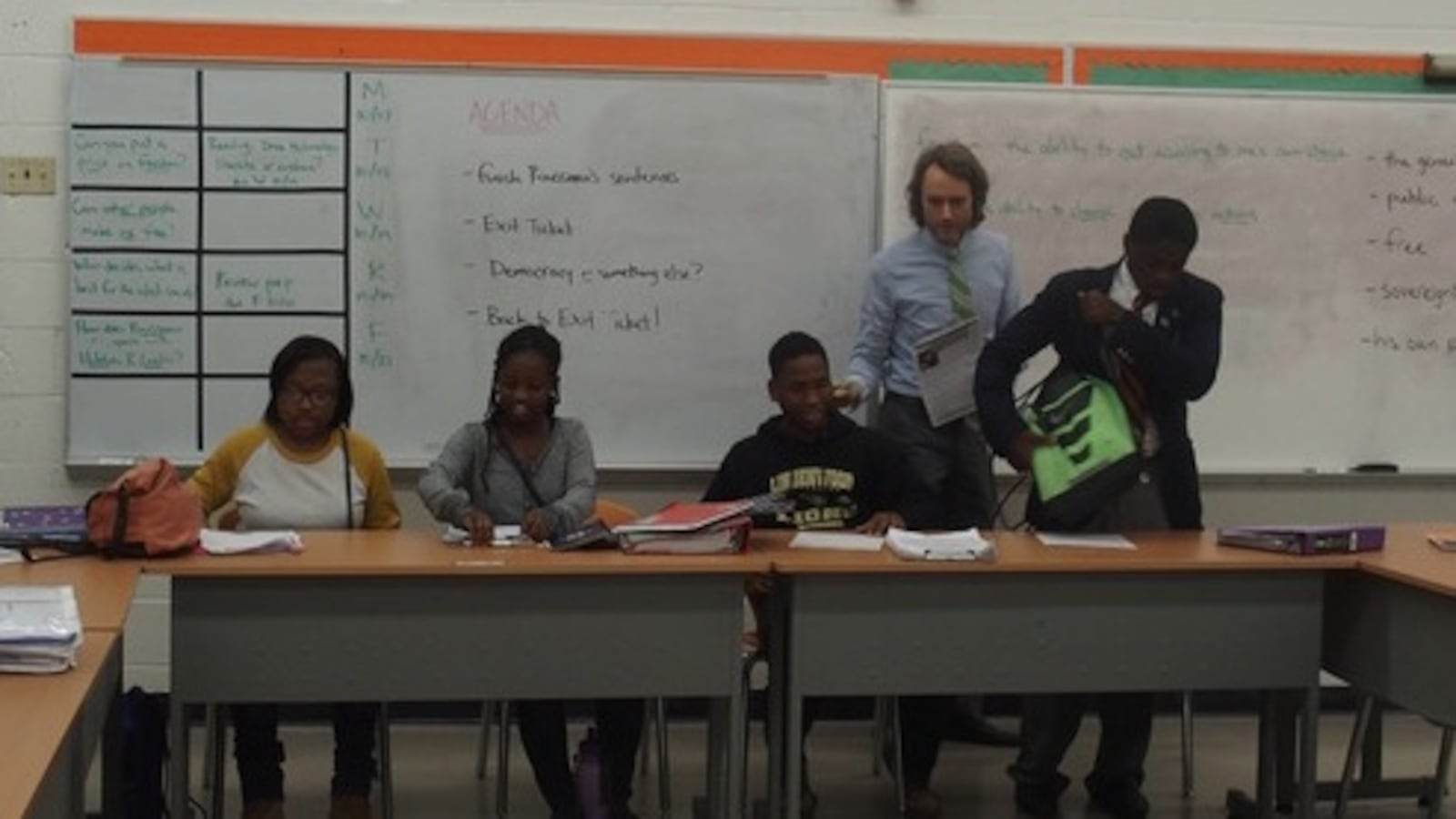How do teachers captivate their students? Here, in a feature we call How I Teach, we ask educators how they approach their jobs. You can see other pieces in this series here.

When Kyle Grady earned his doctorate in philosophy, he knew he would be a teacher. But he didn’t expect to work with high school students.
After a few years teaching in Memphis at Rhodes College, though, he became more interested in understanding how students learn. That meant leaving the college classroom.
“So much has already been decided by the time they get to college,” he said. “I wanted to get on the other side of the process.”
Grady ended up at Freedom Preparatory Academy, one of Memphis’ highest performing charter networks. This year, he’s teaching 12th grade government and economics. Here’s what he had to say about getting students to connect with the material and developing critical thinking skills.
What’s a word or short phrase to describe your teaching style?
Teaching is not about putting sight in blind eyes, but developing curiosity. I like to tap into what [students] are already interested in thinking about and finding a way to connect the material to themselves.
What does your classroom look like?
The seating is seminar style. They are forced to look across the room at each other in the eye. I want them to pose their own questions and not have to look up front, just focused on me.
What’s the most interesting contrast between high school and college students?
High school students are much less hesitant about speaking their minds on complex and sensitive issues, which means that we can get right to the heart of controversial questions much more quickly. This is a difference that I never anticipated before I started teaching high school.
What’s the most fun you had teaching this year so far?
Being able to discuss the presidential election results with my government students, who showed how much they have developed a deep understanding of our political system. There were many strong emotions and confusing questions for us all to process that day, but my students gave me a lot of hope for our political future.
What’s your favorite lesson to teach?
I teach a lesson on the concept of justice in which students begin by choosing a set of laws from the perspective of their own identity, then repeat the process with an identity — age, sex, race, etc. — that is randomly assigned to them. It’s always amazing to watch how quickly this shift in perspective affects students’ sense of fairness, and ultimately the laws that they find just.
What’s your go-to trick to re-engage a student who has lost focus?
Sometimes we plan on certain assumptions and we find out we’ve made all the wrong guesses on what they know. In that situation, you just have to get rid of your plan and use class discussion to steer the class back to the topic at hand. One time, we segued to social media when talking about political philosophies. Eventually, there was a thread of connection about societal pressures that got us back on track.
What are you reading for fun?
I’m terrible about always being in the middle of several books at the same time. On my nightstand right now are a collection of essays by John Muir, a copy of Homer’s Odyssey, and book called “Against Democracy.”
What’s the best advice you ever received?
Trust the path you’re on. The philosopher Hegel wrote something that has always resonated with me: “The owl of Minerva spreads its wings only with the falling of the dusk.” We tend not to understand processes that we’re involved in until they reach their conclusions. But all the choices we’ve made, all the people we’ve met, everything we’ve learned has set us on the path we’re taking. Sometimes we need to keep moving forward, even when we don’t know exactly where that path is taking us.


